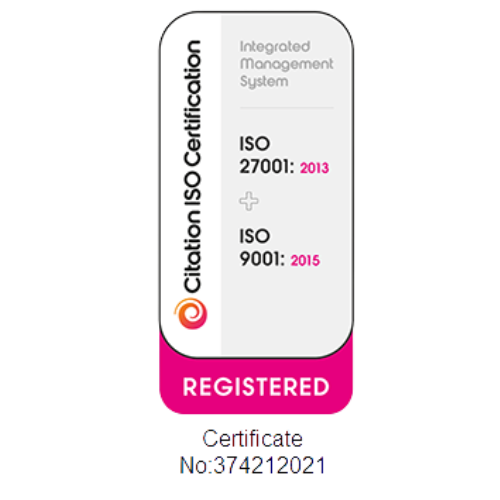The Top Five Mistakes You’re Making With Your Data as a Recruitment Team And How to Fix Them
Summary
This blog outlines the top five ways recruitment teams misuse or underuse their data, from relying on copy-paste workflows to neglecting their CRM. We show how better data flow can boost efficiency, trust, and performance. It positions Xefr as a lightweight, no-rebuild solution that connects existing tools and makes recruitment data work for the team.
Good recruiters live by their data, good ones know how to use it.
Every recruitment firm knows that data matters. CVs, placements, pipeline velocity, client notes, job specs. It’s the stuff that keeps everything moving
But just having data isn’t enough.
The difference between fast, confident placements and endless admin usually comes down to how your team is using that data. Or, how they're not.
Below are five of the most common data mistakes recruitment teams make and what you can do to fix them.
1. Relying on copy-paste workflows
Let’s be real. Most recruiters spend too much time copying info between platforms. From LinkedIn into the CRM. From the CRM into spreadsheets. Then into client updates. And then back again (and again).
It’s repetitive. It’s messy. And it takes away hours that should be spent talking to candidates or closing deals.
What to do instead
Start by connecting your tools properly. You don’t need a whole new platform. Something like Xefr sits on top of what you already use and keeps data flowing cleanly. No double entry. No workarounds. Just synced data where your team needs it.
2. Treating the CRM like a dumping ground
A lot of CRMs end up becoming a black hole. CVs get uploaded and forgotten. Notes are inconsistent. Duplicates start to appear. No one really knows how to tag anything. And eventually, the CRM turns into something people try to avoid!
When recruiters stop trusting the system, they stop using it. And the mess just grows from there.
What to do instead
Set simple processes and a flexible structure your team can actually follow. Agree on simple rules like what a complete candidate record looks like. Keep naming consistent. Make the system fast to use. If it works better, your team will actually keep it up to date.
3. Not using data to make decisions
Recruitment leaders have tons of data but most of it never really gets used. Instead, they go with gut feel or spend too much time building reports from scratch.
- Which roles are dragging on the longest?
- Which consultants are the most consistent?
- Where are candidates falling out of the funnel?
- Which clients are worth your time?
If you can’t answer those quickly your data isn’t doing its job
What to do instead
Set up reporting that actually helps people take action. You want live dashboards and key metrics that reflect how the business really works. Xefr helps by bringing all that data together so you’re not spending hours pulling it manually.
4. Measuring the wrong stuff
It’s easy to count things. Number of calls. Number of CVs. Pipeline size. But these don’t always mean much on their own.
What matters is quality:
- Are candidates replying
- Are clients happy with shortlists
- Are placements sticking
- Are interviews being booked faster
If your team is rewarded based on volume alone, you’re probably missing the bigger picture.
What to do instead.
Choose metrics that reflect results, not just effort. Build your data strategy around what makes clients stay and candidates convert. And make sure your systems are set up to track those things properly.
5. Putting it off
Most teams know when their data is a mess. They’ve seen the duplicates. They’ve felt the friction. They’ve probably had a few meetings about sorting it out one day.
But it keeps getting pushed back. And every week the problem grows.
Soon, no one knows what data to trust. Everyone builds their own version. And the same mistakes keep repeating.
What to do instead
You don’t need a full rebuild. You just need to fix how things connect. Xefr plugs into what you already have and makes it work better. Cleaner data. Better access. No rebuild required. Just a foundation that actually helps your team move faster.
Final thought
Your data should help your team, not hold them back.
If you’re stuck chasing reports, building spreadsheets by hand or second-guessing your own dashboards it’s time to change how things work. Not with more tools. But with better flow.
Want to see how fast your recruitment engine could run?
Xefr helps recruitment teams clean up their systems, automate their workflows, and finally get back the time that matters.
Details
FAQs
Do I need to change my current systems
No, that is the beauty of xefr. It sits on top of your systems. There is no rip and replace, meaning there is a simple transition to streamline your data.
Is this just another dashboard tool?
Xefr is not just another dashboard; it is a data solution that connects your systems and streamlines your data approach.
Being able to access your data in one platform.
Will my team need training to use it?
Xefr is a simple tool that needs no extra training to use. Having an AI search feature in the system it creates a dashboard that is simple and efficient.
What’s the benefit for my business?
You’ll save time, reduce errors, and make faster, better-informed decisions. Xefr gives you one reliable place to get answers, helping your business move quicker and smarter, without adding more complexity.



